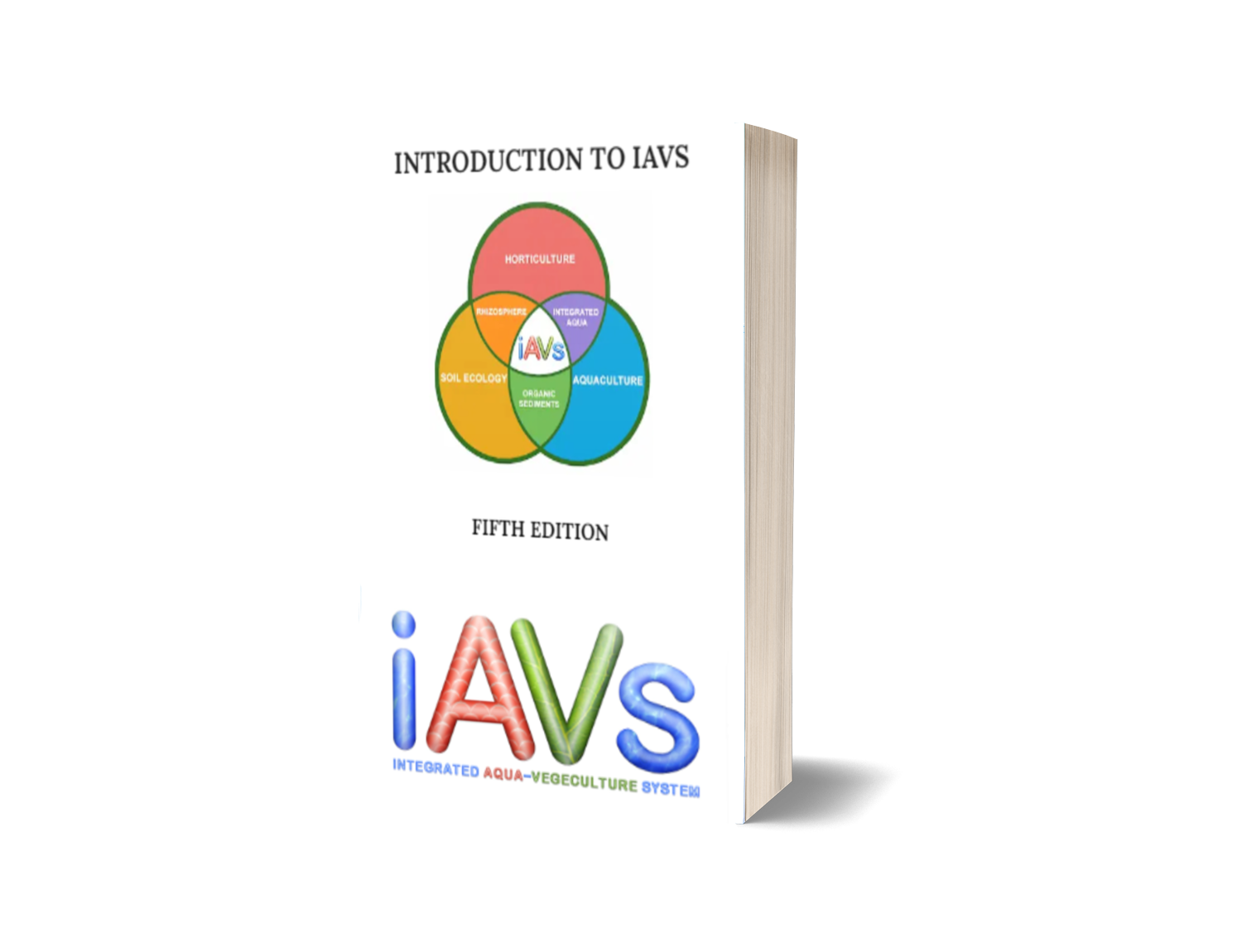Description
“An Introduction to iAVs” is a guide to the Integrated AquaVegeculture System (iAVs), a revolutionary method of sustainable agriculture. The book is dedicated to Gary Donaldson, a passionate teacher and advocate of iAVs, and serves as an introductory preview to ‘A Basic Guide to iAVs‘.
The book is over 165 pages and begins with a brief history of iAVs, detailing how Dr. Mark McMurtry, inspired by the challenges of hunger, poverty, and environmental degradation in African communities, developed the system in the 1980s. McMurtry’s innovative use of sand as a filtration medium and the introduction of a technique known as reciprocating biofilters (RBF), or “flood and drain,” are highlighted as key breakthroughs in the development of iAVs.
The book then delves into the workings of iAVs, explaining how the system mimics natural processes in a freshwater tidal wetland to grow plants and raise fish together. The process involves a fish tank, microbes, a biofilter, and plants, creating a cycle that efficiently uses resources and minimizes waste.
The book also discusses the open-source principles of iAVs, the successful USDA Commercial Trial, and the advantages of iAVs over other methods of sustainable agriculture. These advantages include superior filtration and bio-conversion, increased surface area for bacterial communities, enhanced oxygen availability, and more efficient interaction between roots and soil microbial communities.
The scalability of iAVs is emphasized, with the book detailing its applications for urban families, small-scale and large-scale operations, and utilization of non-arable land. The book includes the goals of iAVs, which include teaching people in need to feed themselves and their communities, and promoting and establishing food security in regions constrained by increasingly diminished environments.
“An Introduction to iAVs” is a well-structured and informative guide that provides a thorough understanding of iAVs. It is an essential read for anyone interested in sustainable agriculture, offering valuable insights into the development, workings, advantages, and applications of iAVs.
This is only available as a read-able E-Book. It is not available for download, as more content and pictures will be added. All customers get free access to the new editions.
Thank you for your support, we only ask for a small amount so that we can work towards developing more content as well as videos to guide you through your learning.



Robbet (verified owner) –
Best iAVs book I have ever read!
TEMP (verified owner) –
This book gave me a solid understanding of how an AVIS works and the resources required to build one.
The book is easy to follow and the author does a good job of breaking up the information into bitesize sections, whilst still getting a good depth of detail across to the reader.
I particularly enjoyed the chapter on sand. I now have a clear understanding of what type of sand I need, which was an area I lacked clarity prior to reading the book.
Here are a few suggested modifications to the book:
Page 49 Ch 12.3 – A photo of the grate/net setup being described.
Page 53 Ch 15.3 – Photos of each step in making the slit drain.
Page 50 ch 13.1 – Would like an explanation of how to know when nutrients have built up to toxic levels.
Page 41 Ch 11.6 – Not sure what the word “my” in brackets relates to.
Page 53 First sentence – grammar error “and the ratio is used is”
Finally, when I started reading the book, it had 56 pages. Now it has 77! It would be nice if there was a way for me to quickly see what information has been added in the latest version.
I appreciate all of the effort that has gone into the creation of this book. It has certainly paid off. Great job!
John (verified owner) –
Thank You for the great review.
We will follow up your suggestions soon. The 3rd Edition is now available for viewing and now has over 100 pages.